What Is an Activity of the Product Owner

Saying a Product Owner’ maximizes value’ is like saying an artist ‘creates masterpieces.’ It downplays the hours, expertise, and decisions behind the craft.
What Is an Activity of the Product Owner?
One key activity of a Product Owner is maximizing the value of the product resulting from the work of the Scrum Team. While the outcome may appear seamless, the effort involves continuous stakeholder engagement, precise backlog management, and nuanced prioritization.
I came across a straightforward common question online, but it got me thinking about how the Scrum Guide often simplifies complex concepts with neat little phrases.
What is an activity of the Product Owner?
- A) Ensuring the Charter is understood
- B) Experimenting with Sprint duration
- C) Maximizing the value of the Scrum Team’s work
- D) Managing the Developers
Answer A doesn’t fit since Scrum doesn’t officially recognize a “charter.” Option B, experimenting with Sprint duration, would involve the whole team, not just the Product Owner. And Product Owners managing developers? Not in Scrum—teams are self-managing. Checks and balances in Scrum keep roles clear: Developers own the Sprint Backlog, and the PO manages the Product Backlog specifically to avoid such dysfunction. So, by process of elimination, the answer is C.
If you didn’t want to go through the lengthy elimination process, you could identify C as the correct answer because the Scrum Guide directly states:
“The Product Owner is accountable for maximizing the value of the product resulting from the work of the Scrum Team.”
It’s not just about the correct answer—it’s how the question downplays the complexity of maximizing value. That simple line makes it sound easy, but it wraps up a host of responsibilities and decisions that are anything but straightforward.
What Are the 3 Main Responsibilities of Product Owners?
A Product Owner’s key responsibilities include:
- Setting a product goal.
- Engaging with stakeholders to define needs.
- Managing the backlog to reflect both.
However, the real challenge is effectively balancing time across these areas.
An artist balances color, form, and composition, every choice shaping the final piece. Similarly, a Product Owner juggles backlog management, product goals, and stakeholder engagement. No matter how mundane it may seem, each decision adds up to a bigger picture.
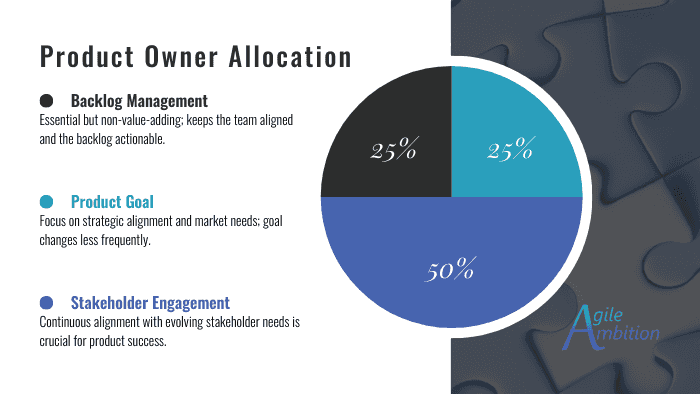
Setting a product goal is like sketching the vision—it’s vital but not something you’re constantly reworking. Backlog management, though? That’s the time-sucker. It’s that “necessary waste” everyone dreads, keeping the team aligned but offering little direct value. There’s even chatter about ditching backlogs entirely or leaning into just-in-time management, which sounds radical but has its merits.
But the real art? That’s in the conversations—engaging with stakeholders, digging into what the customers truly need, and weaving it all back into the vision. It’s about keeping everyone connected, gathering feedback on every increment, and ensuring what you’re building aligns with those expectations.
Knowing what a Product Owner does is one thing, but turning those duties into real product value? That’s where the heavy lifting starts. It’s not just about checking off responsibilities—it’s about making each action count in a way that genuinely drives impact.
How Does a Product Owner Maximize the Value of the Product?
Product Owners maximize product value by understanding the different elements that contribute to it, placing informed bets on high-impact features, and iterating based on outcomes. Yet, understanding the true impact of each choice is far from straightforward.
An artist knows precisely which details will catch the eye, drawing the viewer in. Similarly, a Product Owner identifies which features will make the most significant impact, prioritizing them to guide the product’s evolution.
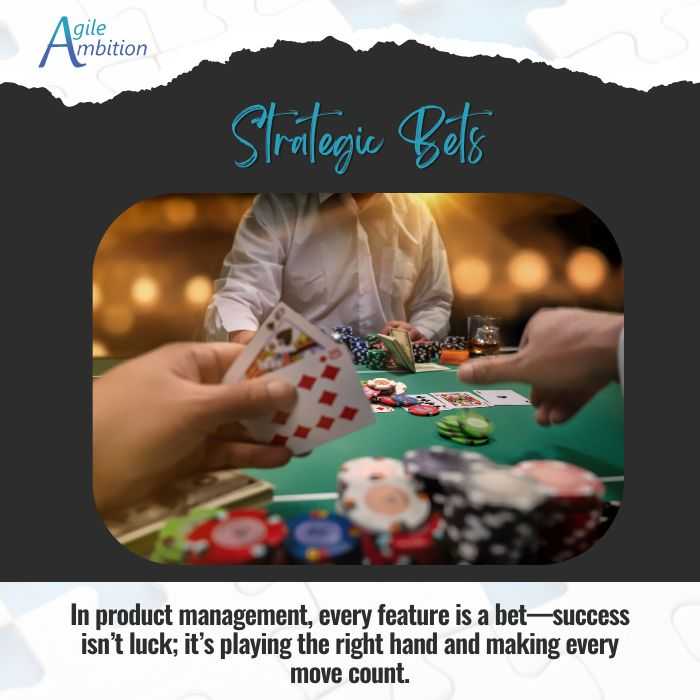
Maximizing product value is a lot like playing poker in a high-stakes tournament. A seasoned player doesn’t just bet mindlessly—they know the game inside and out, read the room, and make calculated moves based on the odds. In the same way, a Product Owner doesn’t just pick features at random; they’ve got to understand the product landscape, know what the customers want, and place their bets on what’s most likely to pay off. And just like any good poker player, they keep tabs on every win and loss, learning from each hand to refine their strategy. It’s not just about luck; it’s about knowing when to hold ’em, when to fold ’em, and how to make each bet count.
Managing the Product Backlog helps Product Owners refine their options and set up the best plays for the product’s future.
How Does a Product Owner Manage the Product Backlog Effectively?
Product Owners can manage the Product Backlog effectively by prioritizing with techniques like Cost of Delay, setting clear refinement criteria (like a Definition of Ready), and avoiding excessive upfront planning. This approach keeps backlog management lean, allowing more time to focus on delivering real value.
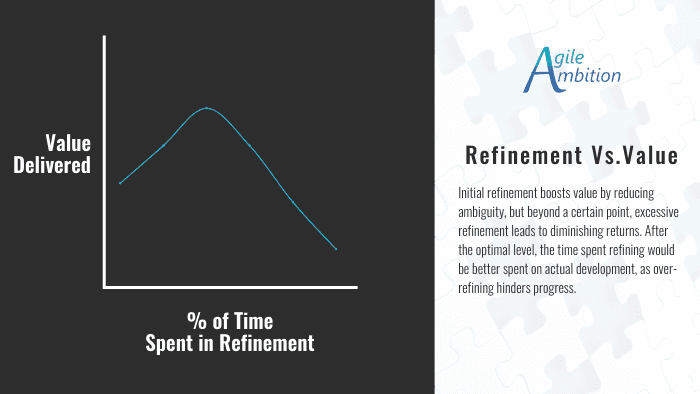
Obsessing over every detail in art can stall creativity before the first brushstroke. Product Owners face a similar pitfall with excessive backlog refinement—overthinking every item rather than taking action. Like an artist who knows when to start painting, a Product Owner must recognize when the backlog is “good enough” to keep the team moving forward without endless tweaks.
A Definition of Ready gives you that clear signal to stop refining and start building, so you don’t fall into the trap of endless tweaks. And timeboxing your refinement sessions? It’s your safeguard against sinking too much time into perfecting the plan when you should be executing. It keeps things sharp, focused, and stops refinement from turning into a black hole of wasted hours.
Managing the backlog is just part of the equation—deciding what comes first and why requires a keen understanding of prioritization techniques.
What Decision-Making and Prioritization Techniques Are Commonly Used by Product Owners?
Decision-making and prioritization techniques commonly used by Product Owners include:
- MoSCoW: Helps categorize tasks by importance.
- Value vs. Effort: Assesses the payoff against effort.
- WSJF: Focuses on delivering high-value features quickly.
- Cost of Delay: Quantifies the cost of delayed delivery.
- Kano Model: Prioritizes features based on impact on customer satisfaction.
- RICE: Scores options by reach, impact, and effort.
Choosing a method that simplifies decisions and minimizes second-guessing can improve prioritization efficiency.
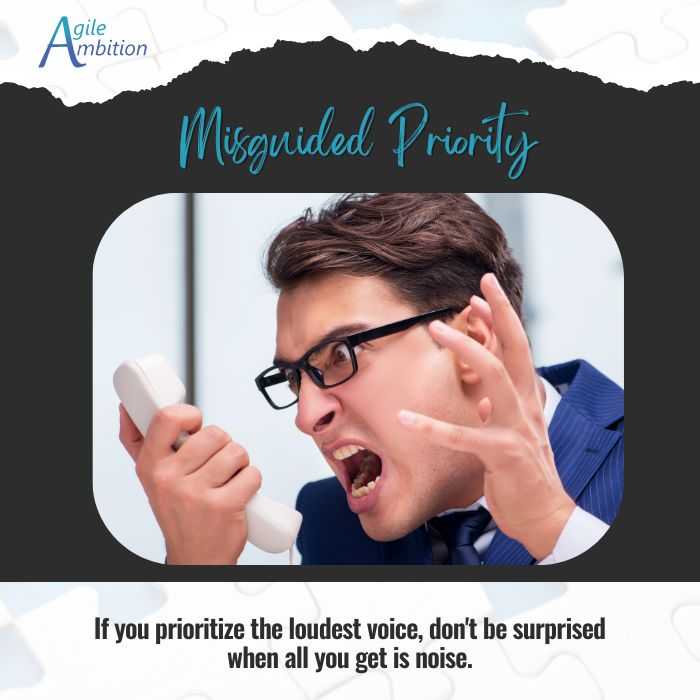
Just as artists find the right tools for their style, Product Owners must choose prioritization techniques that fit their team and work. It’s an art of creating alignment—pick the wrong methods, and you risk inviting chaos and wasting resources, muddying the way forward.
Decision-making doesn’t happen in a vacuum—stakeholders are key players, and how you engage them can significantly impact prioritization success.
How Does a Product Owner Engage with Stakeholders and Communicate Effectively?
Product Owners engage with stakeholders and communicate effectively by:
- Regular Check-ins: Keeps stakeholders informed and aligned.
- Transparent Progress Updates: Builds trust and keeps everyone on the same page.
- Encouraging Feedback: Fosters collaboration and values stakeholder input.
The tricky part? Balancing needs without compromising the product vision.
Just like an artist tweaks a painting based on a client’s feedback, adding a stroke here or changing a shade there, a Product Owner takes in stakeholder input to shape the product. It’s all about listening, adjusting, and fine-tuning to ensure the final piece truly resonates.
Engaging stakeholders is key, but the Product Owner must step up, cut through the noise, and keep everyone aligned when priorities clash.
How Do Product Owners Handle Conflicting Stakeholder Priorities?
Product Owners handle conflicting stakeholder priorities using data-driven methods like Cost of Delay and RICE, which offer a clear and defensible rationale for decisions. However, even the strongest data-backed approaches can falter when faced with subjective biases or shifting stakeholder influence.
Both artists and Product Owners share a delicate responsibility: safeguarding the integrity of the core vision amidst a cacophony of external pressures. Just as an artist must resist the temptation to dilute their work to suit fleeting trends or critics’ whims, a Product Owner must anchor decisions in the product’s true north, even when stakeholders clamor for diverging paths. It’s easy to get swayed by loud voices or urgent requests, but the real mastery lies in discerning what truly serves the vision from what merely adds noise. In this balance, the integrity of the whole is preserved, allowing the final creation—be it a masterpiece or a product—to resonate with its intended purpose.
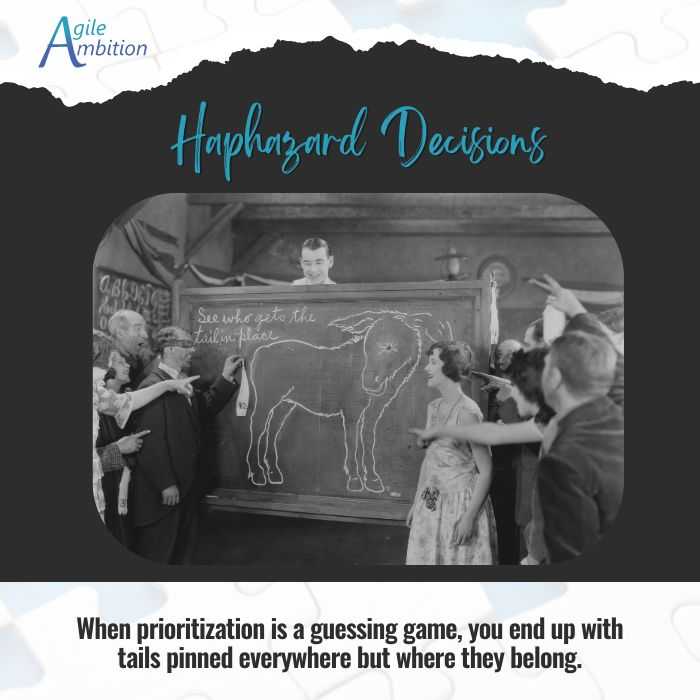
A data-driven prioritization method brings clarity and order in a landscape of competing demands and opinions. It allows you to compare options with intention, making it easier to defend your decisions confidently, even when faced with pushback.
Sound decision-making doesn’t stop at prioritizing new features. It also means facing the often-overlooked but inevitable technical debt that quietly builds up over time.
How Do Product Owners Manage Technical Debt Alongside New Features?
Product Owners manage technical debt alongside new features by balancing their backlog with tasks that address both immediate customer needs and long-term system health. However, prioritizing between short-term gains and long-term stability isn’t always straightforward—especially when quick wins can mask deeper issues.
Separating technical debt from feature work creates a harmful perception that debt is less important, merely a developer’s issue rather than a critical factor in customer value. By integrating technical debt into prioritization, we ensure all work supports the product’s stability, quality, and long-term success.

Managing technical debt involves two main strategies: balancing workload or using an unbiased prioritization method.
Balancing workload could mean setting aside sprint capacity for tech debt, though as David Pereira points out, this can split focus and limit progress on larger issues. An alternative is to alternate between features and tech debt, tackling one after the other.
Unbiased prioritization methods like Cost of Delay, WSJF, or RICE, integrate tech debt into the decision-making process, evaluating it alongside features. While this approach balances value and demands, the challenge lies in quantifying the impact of resolving tech debt.
TLDR
Reducing the role of a Product Owner to just “maximizing value” overlooks the true artistry behind their decisions. It’s about striking a balance between immediate demands and long-term stability, navigating technical debt, and making thoughtful choices that protect the product’s essence—just like crafting a masterpiece.
Works Consulted
- THE AGILE PRODUCT OWNER RESPONSIBILITIES
- Deleting the Product Backlog Is Your Salvation to Be Agile
- Drunk Agile: Episode 78 Just In Time Over Prioritization
- Scrum Guide
- How to Deal With Tech Debt Effectively
- Practical Kanban: From Team Focus to Creating Value
- Thinking in Bets
Share
Table Of Contents
Fuel an Idea
Every week, I break down complex ideas, strip away the fluff, and give you experiments to turn knowledge into skills.
If that’s worth a coffee, consider fueling the next big insight.
No pressure. No guilt trips. Just impact.
Buy Me a CoffeeRelated Posts
Quick Links
Legal Stuff

